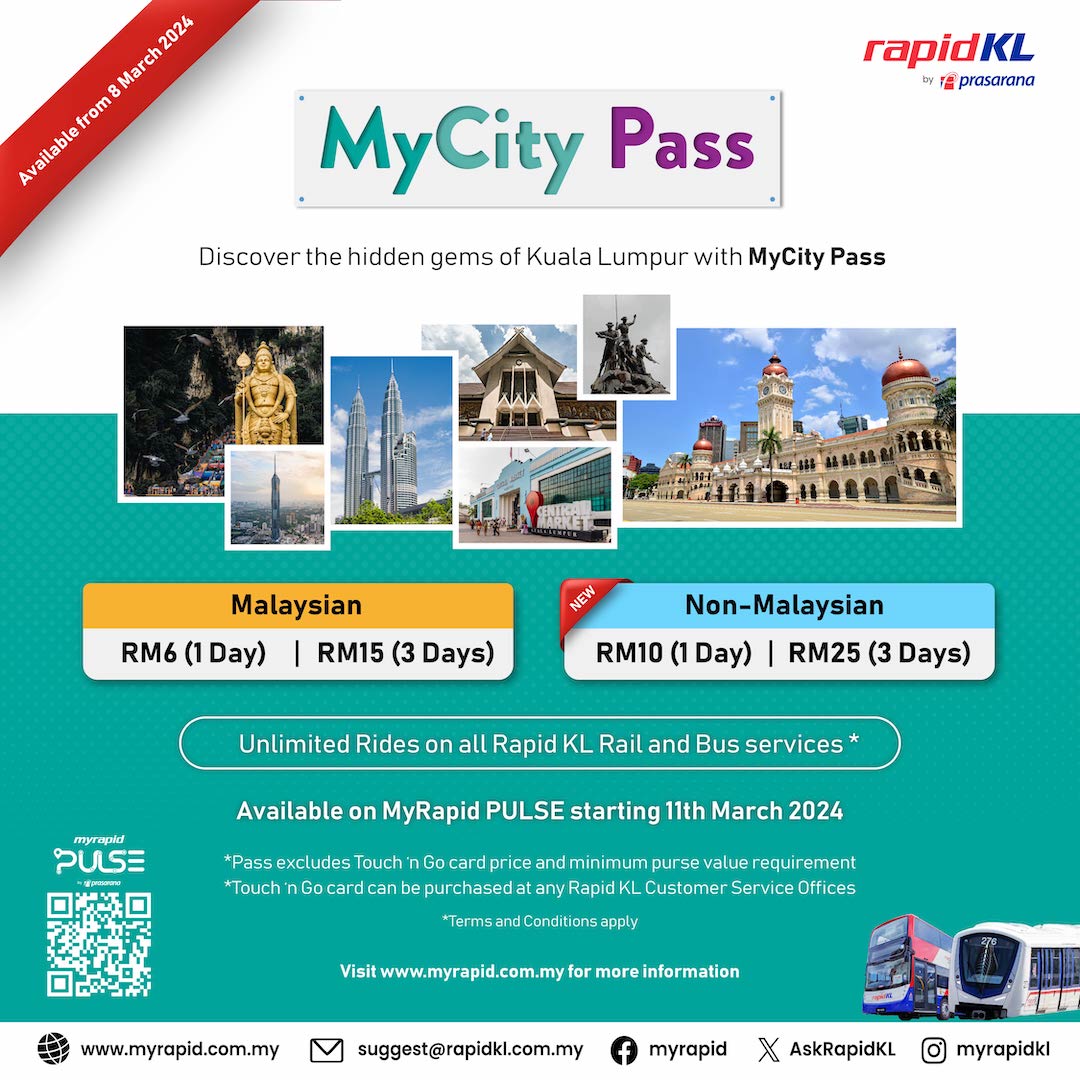Previous slide
Next slide
Welcome to MyRapid
The official service website for Rapid KL, Rapid Penang and Rapid Kuantan by Prasarana Malaysia Berhad.
Check your train and bus service alerts
Plan your journey with our web Journey Planner
Get the latest train services status
| Service Line | Updated On | Status | Remark | route_id | route_short_name | route_long_name | route_color |
|---|---|---|---|---|---|---|---|
| KL Monorail Line | - | Normal Service | MR | MRL | KL Monorail Line | 84bd00 | |
| MRT Kajang Line | - | Normal Service | MRT | KGL | Kajang Line | 047940 | |
| LRT Kelana Jaya Line | - | Normal Service | KJ | KJL | Kelana Jaya Line | D50032 | |
| LRT Ampang Line | - | Normal Service | AG | AGL | Ampang Line | e57200 | |
| LRT Sri Petaling Line | - | Normal Service | PH | SPL | Sri Petaling Line | 76232f | |
| MRT Putrajaya Line | Normal Service | PYL | PYL | Putrajaya Line | FFCD00 |
Service Quick Links
News on Prasarana

Weekly Performance Update
Updates on rail and bus operations, covering ridership, load factor, and many more.

Safety Advisory
Essential safety tips for commuters

Concession Card
Enjoy 50% savings on cash rate for your travel

Women's Coach
Providing convenience for female passengers










